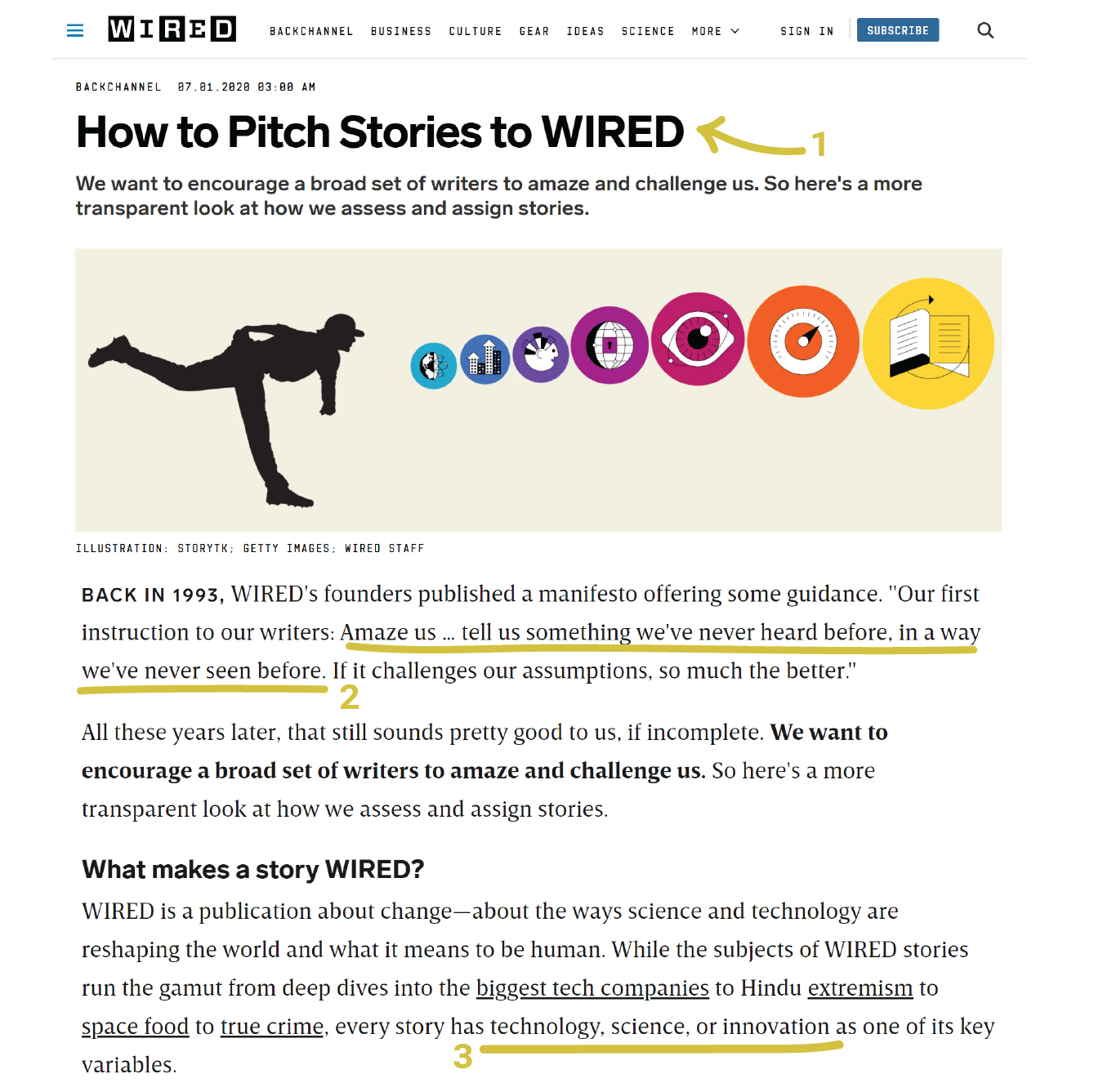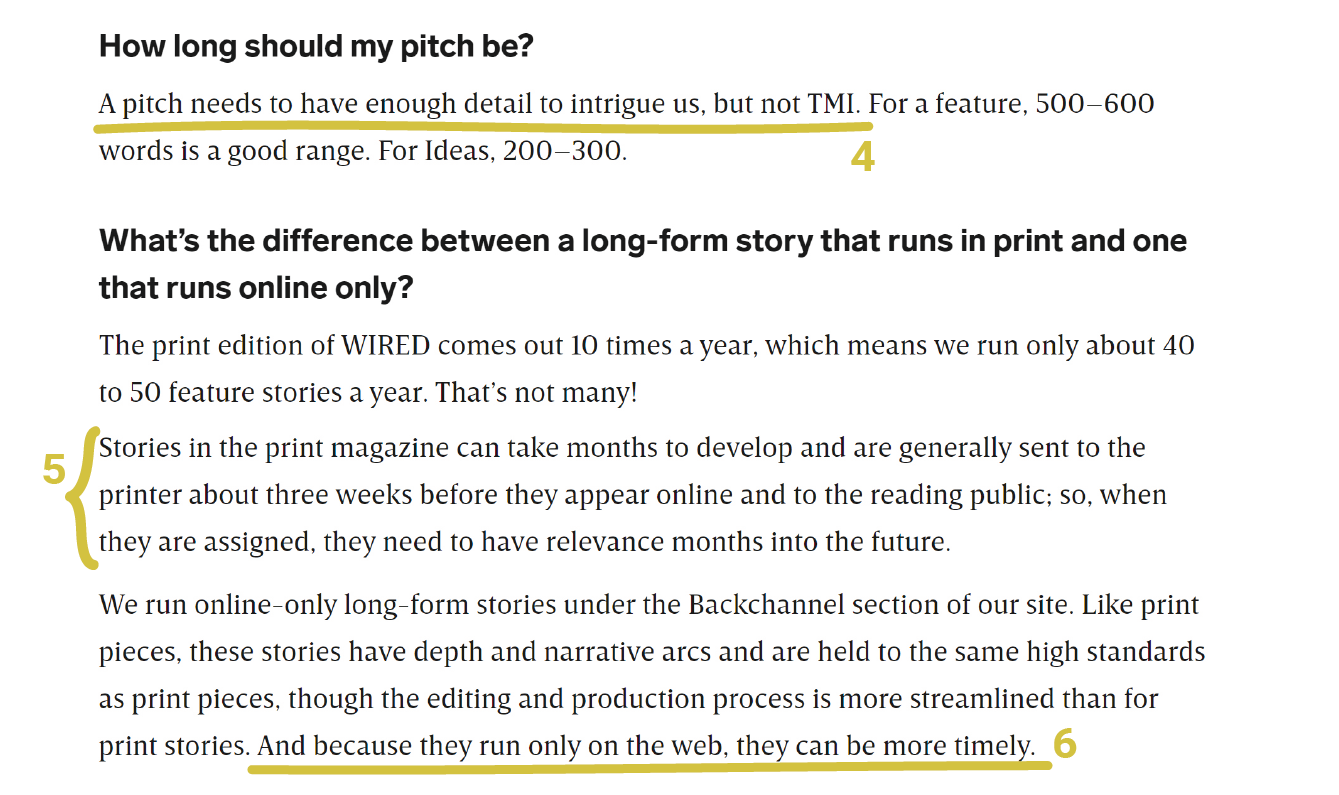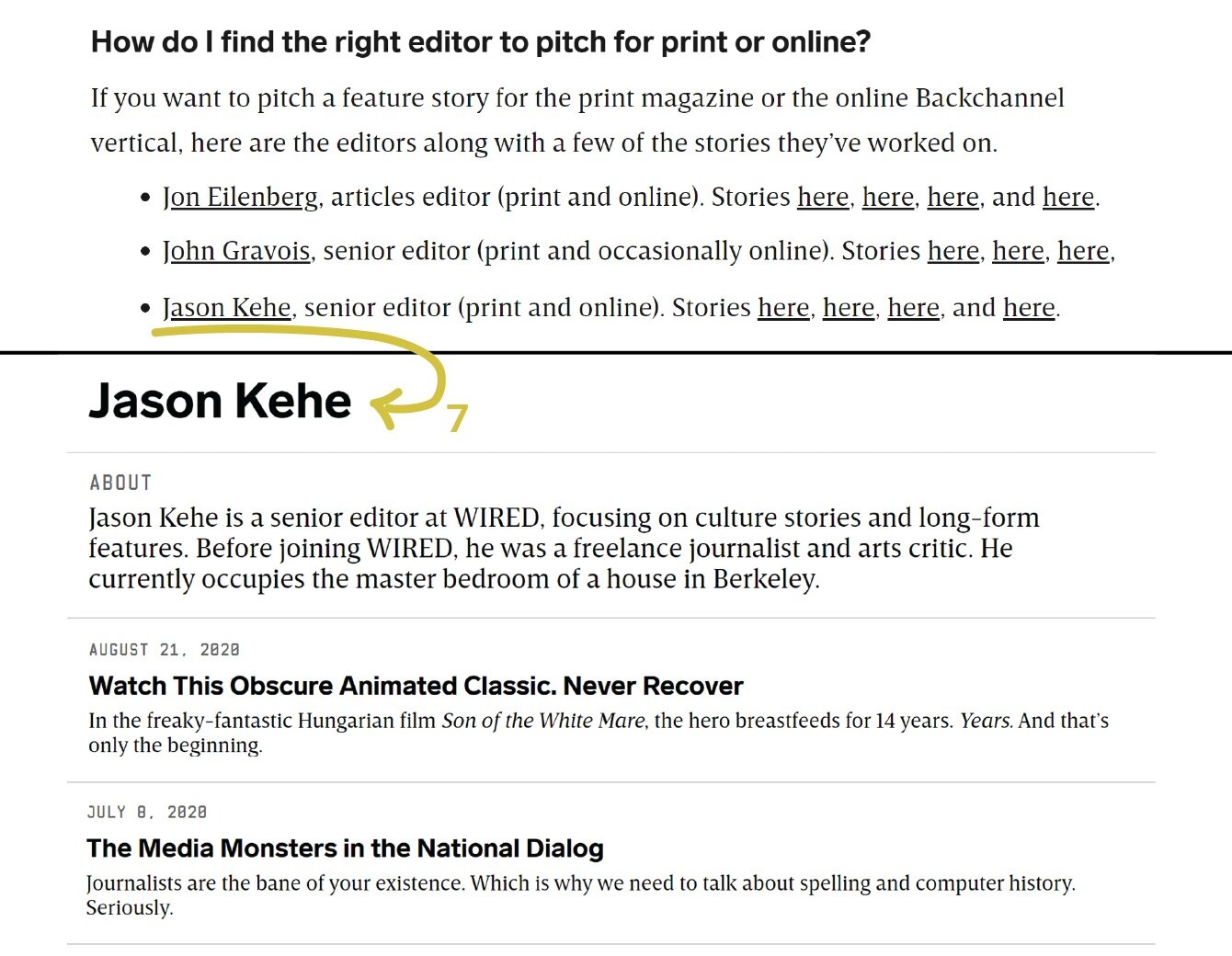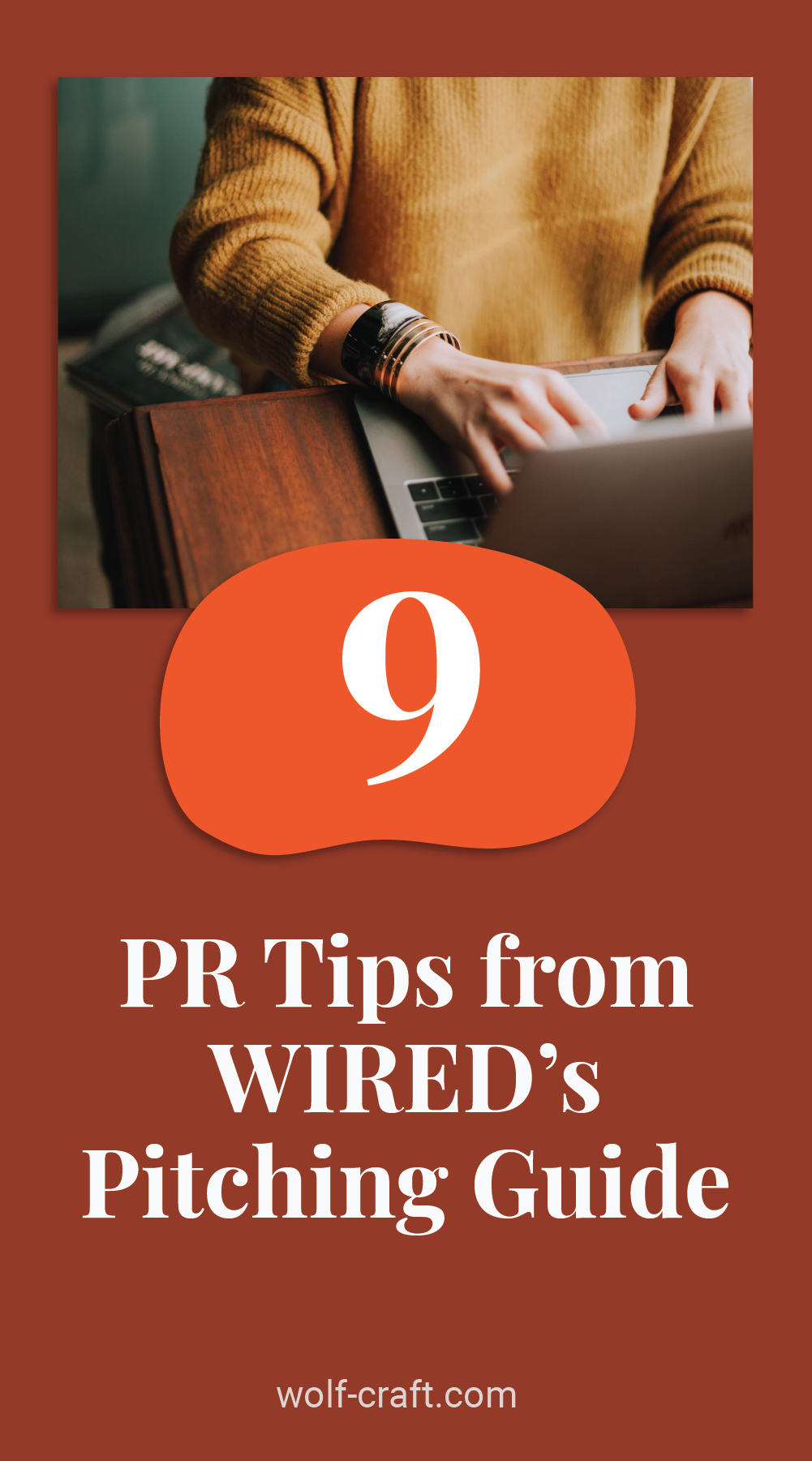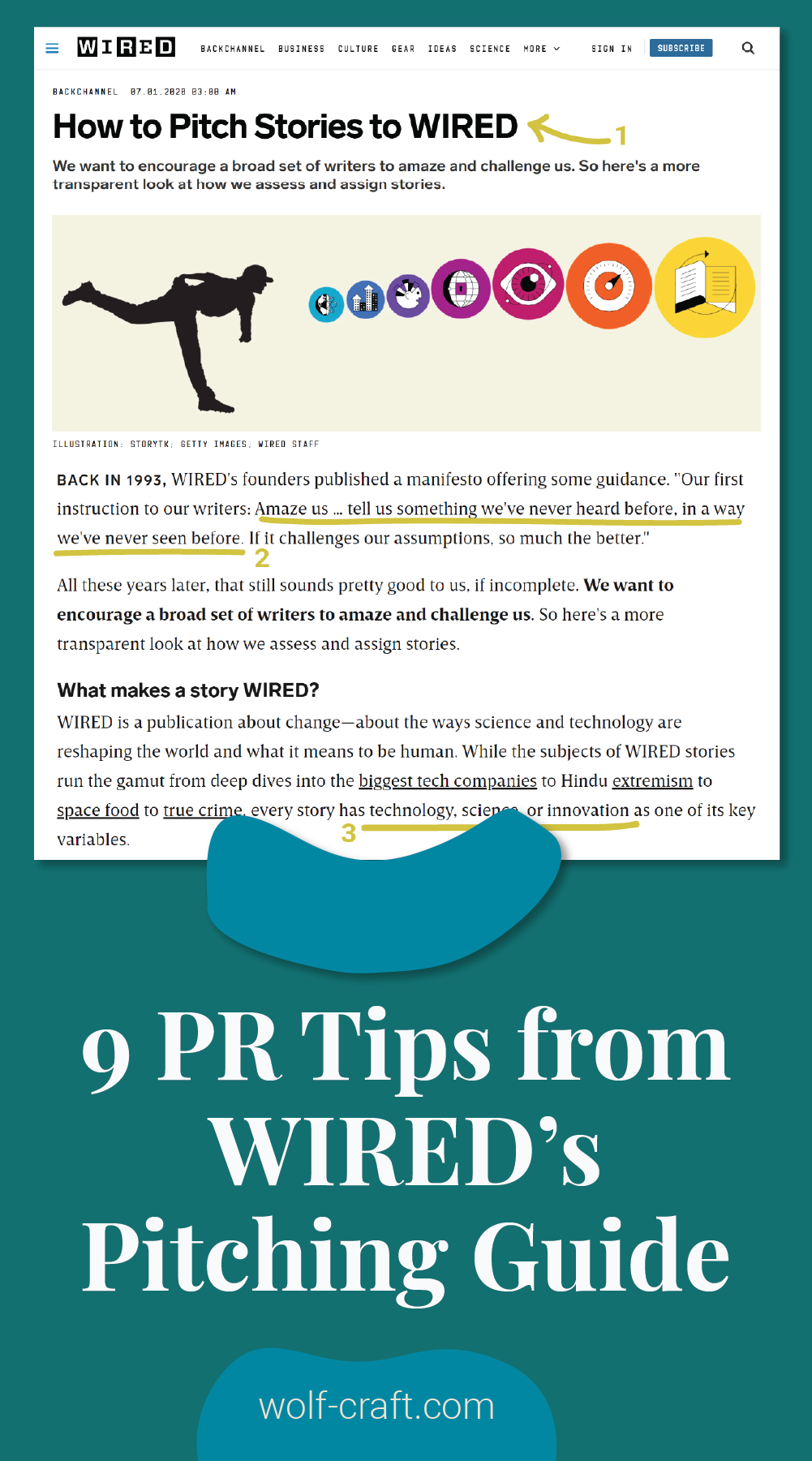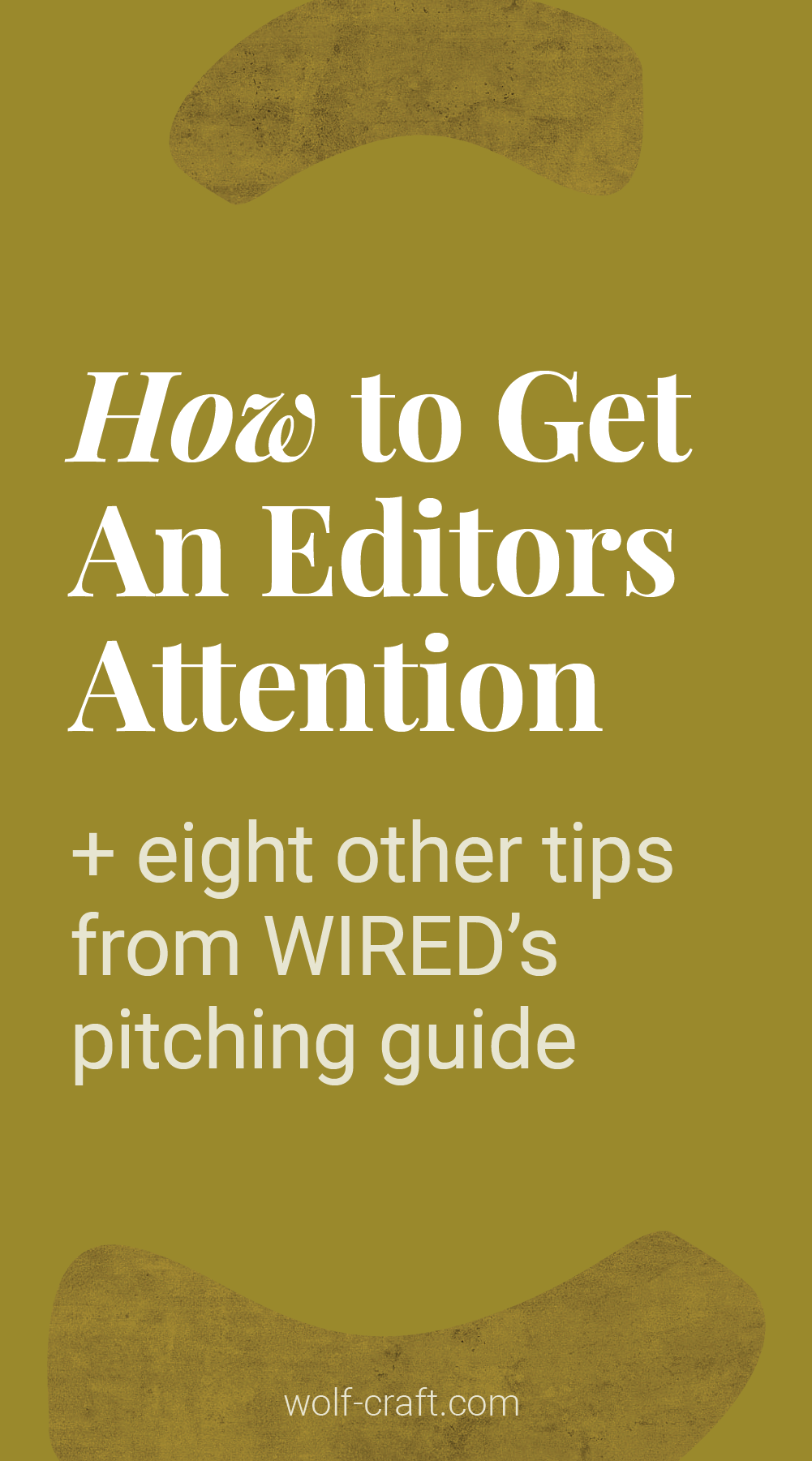9 PR Tips from WIRED Magazine’s Pitching Guide
Sometimes an amazing resource falls into your lap. This is one of those times.
And this one was published way back in 2020, but the learnings are still relevant!
In 2020, WIRED Magazine created their How to Pitch Stories to WIRED guide. If you’ve tried to figure out who to pitch you may have noticed that the structure of a publication's editorial staff can be opaque. It can be hard to know what specific editors cover or what they like to receive pitches about.
If you read between the lines of this guide, there are a lot of good tips for developing a PR strategy beyond pitching WIRED. The details they share apply broadly for pitching different publications. We pulled out nine tips that you can incorporate into your own media work.
We applaud how WIRED has decentralized this information and made it widely available.
Now, anyone who wants to pitch the publication knows what exactly they're looking for and who to reach out to. We think this type of resource plays a key roll in a larger goal to tell more diverse stories. We hope more media outlets do this work.
Below we outlined 9 tips directly from Wired’s guide.
Use these to start or improve your own PR strategy.
1. Create ‘how to pitch stories’ guides for your biz.
This guide was written for freelancers looking to pitch stories to WIRED, but it lays out a great framework to pitch your own new projects, collaborations, or launches.
The learnings we outline here apply to the research you'll do for any new publication you want to pitch. You can make a How to Pitch Stories to XYZ, guide for any publication you want to send a story to.
2. Make your pitch news.
“Amaze us… tell us something we’ve never heard before, in a way we’ve never seen before.” Use this prompt with your own biz. It will help you determine if your story is newsworthy.
What is the specific problem your project or product solves?
What are you doing that is new, that the publication you're pitching’s audience to will want to read about?
How to pitch pro tip:
Incorporate what makes you work newsworthy early in your pitch email and wherever possible include this info in your pitch subject line.
3. Understand a publications’ point of view.
Every publication has a POV that establishes their unique voice. Here, WIRED tells us their POV is: technology, science, and innovation.
To determine the POV of a publication, make note of the three or four key variables that run through several articles. This will help you determine if your story is a good fit for the out you want to pitch.
As you are doing this work, note of the types of images and graphics included in the articles. Then you’ll know if you already have the right images of your work or if you need to set up a photoshoot before reaching out to editors.
4. Write a brief pitch.
“A pitch needs to have enough detail to intrigue us, but not TMI.”
Every pitch has different needs, but anyone on the receiving end knows shorter is often better. Get straight to the point, clear and concise. Pitching is an exercise in editing. If an editor wants more information they'll ask!
One of the most important elements of your pitch is the email subject line. Here’s some of our best tips on that specifically.
5. Research lead times.
"Stories in the print magazine can take months to develop and are sent to the printer about three weeks before they appear online..."
This describes a fundamental concept in media outreach, lead times.
If you want to pitch a project for the September issue, you'll need to send your initial pitch in May or June. AND, your story will still have to be relevant by the time the September issue comes out.
Print national publications, like WIRED, are long lead. They’re the magazines sold in airports; think Cosmo, Vogue, Men’s Health, Outside, FastCo, etc. Long leads typically have a 3-4 month lead time.
If you sell products and want to pitch holiday gift guides, the lead times for this opportunity is longer. Read about gift guide timelines here.
6. Different mediums, different needs.
“And because they [stories] run on the web, they can be more timely.”
Here you learn that WIRED publishes digital articles that do not necessarily appear in their print magazine. This is true for almost all major print publications.
The production process for digital-only articles is faster than print articles simply because they don't have to make a physical magazine.
Digital-only stories are short lead. Short leads vary from two months to a week, depending on how involved the story is. Short leads should be your target for stories you want out in the world quickly. Breaking news, CEO responses to events, limited edition products, anything that has a quick sunset should ONLY be pitched to short leads.
If you are finding this post helpful we think you’ll get a lot out of our 5-Day Pitch the Media Mini Course
7. Know your editor.
Almost all digital publications have an individual page for each editor where all their stories are aggregated.
Individual editor pages are the best place to look to understand who the correct person to pitch is.
You may read one article and think "this editor is perfect for my project", but it's important to review their body of work to see if your project touches on some of the main themes they write about on a consistent basis.
8. Offer an exclusive.
“It’s also a good idea to make sure the story you’re pitching hasn’t been covered elsewhere. If it has been, please tell us how your proposed piece will advance existing coverage.”
This is great advice for any publication you're thinking of pitching. You need to have an understanding of the topics that are covered, the tone, and the general audience they are speaking to. Many high tier publications, like WIRED, only publish exclusives. This means they'll only publish stories that have not appeared in other publications.
When developing a pitch strategy you can identify one or two long shot publications and pitch them first, offering an exclusive on the story. If you don't hear back move on to pitching lower tier publications, like local and regional outlets, blogs with a more narrow audience, or trade publications.
9. Pitch reoccurring features.
“The magazine has a regular roster of columnists and staff writers for the front of the magazine.”
If you know a publication does a monthly "behind the scenes" or "get to know the founder" feature you'll be able to prepare well in advance. Add this pitch topic to your yearly media outreach calendar and give yourself plenty of time to take relevant professional photography and develop a story before you pitch.
Ready to start pitching your work and business, but want support from a PR pro?
Check out our Custom Media List & Opportunities Kit
